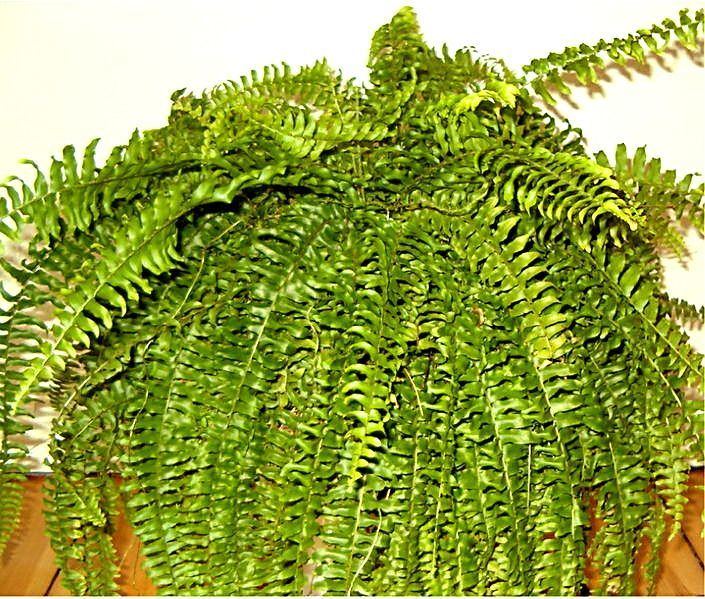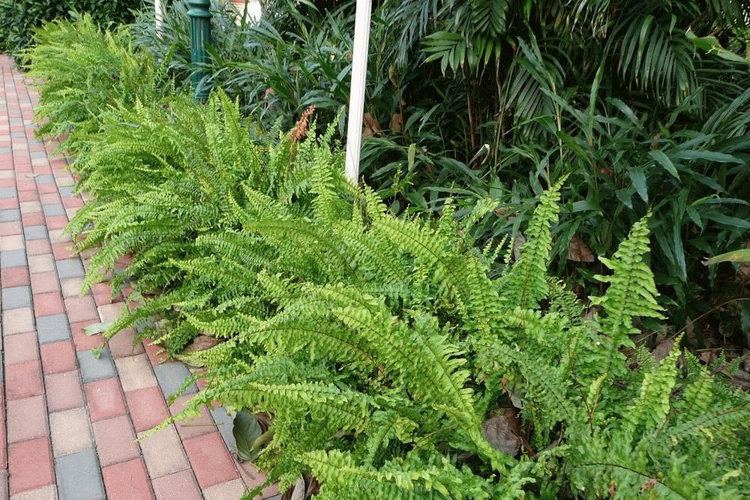Genus Nephrolepis Rank Species | Division Pteridophyta Scientific name Nephrolepis exaltata Higher classification Nephrolepis | |
 | ||
Similar Nephrolepis, Nephrolepis cordifolia, Peace lily, Areca palm, Polystichum munitum | ||
Nephrolepis exaltata visual recognition in 61 secs
Nephrolepis exaltata, the sword fern, is a species of fern in the family Lomariopsidaceae (sometimes treated in the families Davalliaceae or Oleandraceae, or in its own family, Nephrolepidaceae), native to tropical regions throughout the world.
Contents
- Nephrolepis exaltata visual recognition in 61 secs
- Nephrolepis exaltata
- Description
- Cultivation and uses
- References

It is common in humid forests and swamps, especially in northern South America, Mexico, Central America, Florida, the West Indies, Polynesia and Africa. Also known as the Boston swordfern, wild Boston fern, tuber ladder fern, or fishbone fern — it is in the broader family of sword fern.
Nephrolepis exaltata
Description

The fronds of Nephrolepis exaltata are 50–250 cm long and 6–15 cm broad, with alternate pinnae (the small "leaflets" on either side of the midrib), each pinna being 2–8 cm long. The pinnae are generally deltoid, as seen in the adjacent picture. The pinnate vein pattern is also visible on these highly compound leaves. The edges appear slightly serrate.

The species has erect fronds, but Nephrolepis exaltata 'Bostoniensis' (Boston fern), has gracefully arching fronds. This mutation was discovered in a shipment of N. exaltata to Boston from Philadelphia in 1894. Other proposals for the origin of the term Boston fern were documented by David Fairchild who stated the term came from Florida pioneer nurseryman John Soar who sent the plants to his friend in Boston.
Cultivation and uses
Nephrolepis exaltata is a very popular house plant, often grown in hanging baskets or similar conditions. It is a perennial plant hardy in USDA plant hardiness zones 9-11. Although the fern may appear totally dead due to frost, it will re-emerge in the spring. In general, the Boston fern likes damp, but not soggy soil that is rich in nutrients. Of the common cultivated ferns, the Boston fern is the most tolerant to drought. The fern thrives best in humid conditions, so when grown as a house plant it becomes necessary to mist the plant when relative humidity falls below around 80%. Although outdoors this plant prefers partial shade or full shade, inside it grows best in bright filtered light. This plant is usually propagated by division of the rooted runners, as named cultivars will not produce true spores.
It is safe for cats to eat as it is known to be non-toxic.
A related species, Nephrolepis cordifolia (Tuberous sword fern), is frequently confused with this sword fern, and is a serious exotic invasive plant, forming dense monocultures. Nephrolepis exaltata is classified as an invasive alien plant in South Africa. In some provinces it must, by law, be eradicated. In others, a permit is required to import, possess, grow, breed, move, sell, buy or accept one as a gift.
